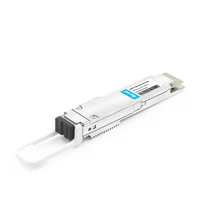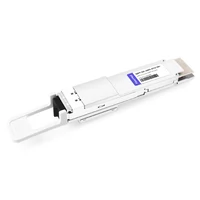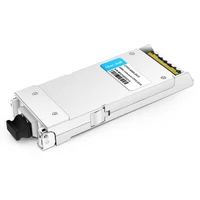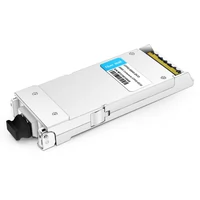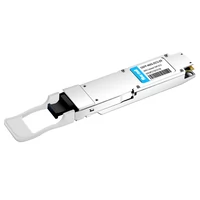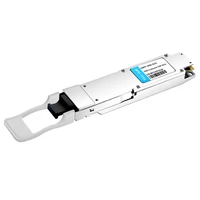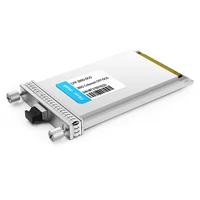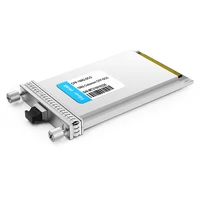In recent years, coherent optical communication technology has increasingly become a hot spot in the field of optical communication. Coherent optical communication with complex modulation saves optical bandwidth resources and improves fiber transmission efficiency, which is an excellent choice to further increase transmission bandwidth. In the field of data communication, coherent technology has also become the mainstream solution for Data Center Interconnection (DCI) (80~120km). The usage of coherent optical links will see a spurt of growth in the coming years, and these new applications also put forward new requirements for coherent optical transceiver systems, so coherent transceivers have been created. In this article, we will take you to step by step through the comparison of coherent and non-coherent optical communication to understand what is coherent optical communication technology and introduce four types of coherent transceivers that can realize 100G-400G transmission in the current market.
Table of Contents
Toggle1. What is coherent optical communication technology?
In the data center and network infrastructure construction, we often hear about 400G transmission, and coherent optical communication is the main technology direction to achieve this rate. It plays a great advantage in the line-side backbone transmission.
Light with the same frequency and the same vibration direction can be called coherent light. Coherent modulation and heterodyne detection technology are mainly used in coherent optical communication, and the coherent transceiver is the main product based on this technology.
The so-called coherent modulation is to use the signal to be transmitted to change the frequency, phase, and amplitude of the optical carrier (instead of changing the intensity of the light like intensity detection), which requires that the optical signal has a certain frequency and phase (instead of not having a certain frequency and phase like natural light), that is, it should be coherent light. For example, the laser is a kind of coherent light. The so-called heterodyne detection is to use a laser-generated by local oscillation to mix with the input signal light in the optical mixer to obtain an IF signal varying according to the same law as the frequency, phase, and amplitude of the signal light.
Coherent optical communication technology is widely used, especially for ultra-long wavelength (2~10μm) optical fiber communication, coherent optical communication is the most attractive. With the development of optical fiber communication technology, using ultra-long-wavelength optical fiber to realize ultra-long-distance communication is one of the important directions of optical fiber communication in the future.
2. Coherent and non-coherent optical communication
Coherent optical communication includes the following four key technologies:
- Polarization multiplexing and high-order modulation: using the orthogonal polarization characteristics and phase information of light, the original signal is divided into two for many times, which can greatly reduce the rate of electric layer processing.
- Coherent receiving technology: using the local oscillator laser with the same frequency and phase to cohere with the received optical signal, the amplitude, phase and polarization state information can be recovered from the received signal.
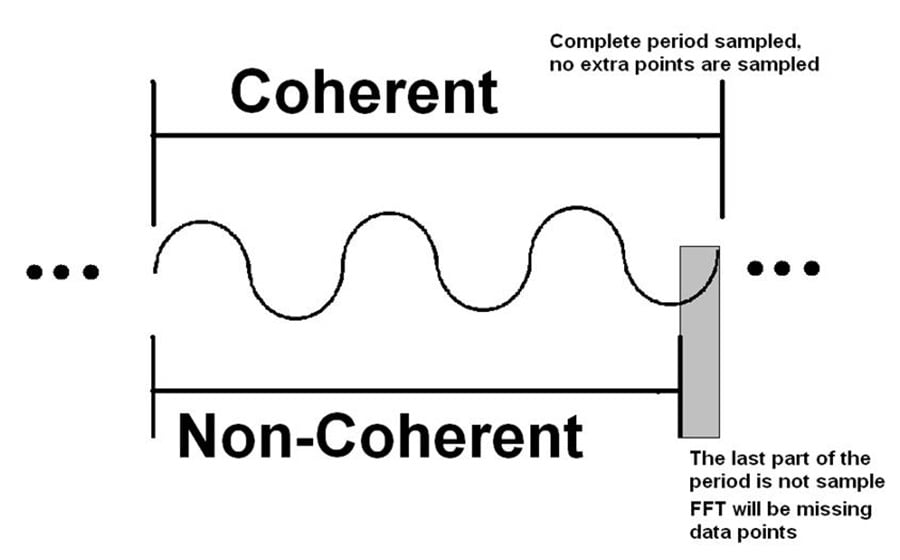
- Digital signal processing (DSP) technology: solves the signal distortion and time delay caused by dispersion at the electrical signal level through DSP, and compensates PMD and CD, which can greatly improve the tolerance of PMD and CD.
- High-performance FEC algorithm: using FEC forward error correction coding can improve the OSNR tolerance of the system. Different FEC types and overhead ratios can be designed for different rates, code types, and transmission performance requirements.
In general, it can be seen that coherent and non-coherent optical communication have their own advantages and disadvantages, and are suitable for different application scenarios. Non-coherent optical communication is mostly used in 2.5G and 10G line transmission, early 40G line transmission, and multi-sub-wavelength 100G Metro transmission. Coherent optical communication is mostly used for 100G line transmission, ultra-100G line transmission, and ultra-long-distance optical transmission.
3. What is a coherent transceiver?
Coherent transceiver is a direct product of coherent optical communication technology. The following will introduce four types of coherent optical modules that have appeared in the market: CFP-DCO, CFP2-DCO, OSFP-DCO, and QSFP-DD DCO.

At first, the coherent transceiver was packaged in a CFP form factor. CFP MSA provides 82mm package width and less than 24W power consumption, which is enough to put the required three optical elements (laser, modulator, ICR) and DSP into CFP to form a complete coherent transceiver. This transceiver is called “DCO”, which means “Digital Coherent Optics”. CFP-DCO can be inserted into any slot designed for CFP and communicate with digital signals through the optical port. Therefore, switches or routers equipped with CFP slots can accommodate short-range client CFPS or long-range coherent CFP-DCO transceivers in any slot.
However, low power consumption, small package, large capacity, and low cost are the continuous goals of the optical communication industry. Therefore, CFP MSA inevitably has to keep up with the size of CFP2. The standard width of CFP2 is 41.5mm and initially allows 12W power consumption. As shown in the following table, compared with CFP-DCO, the performance of CFP2-DCO is significantly improved. The CFP2-DCO module can meet both metro and access networks, while the power and density savings of the CFP2-DCO offer considerable value in terms of the total cost of ownership (TCO).
| Power Consumption | Max Transfer Rate | 200G long distance transmission capacity | 400G metro network transmission capability | Electric energy consumption per 100G | |
|---|---|---|---|---|---|
| CFP-DCO | 32 | 200 | yes | yes | 0.16 |
| CFP2-DCO | 24 | 400 | yes | yes | 0.06 |
Within the power limits of CFP2, CFP2-DCO applications can also be extended to:
- CFP2-200G-DCO ultra-long distance transmission: optical signal-to-noise ratio (OSNR) of less than 14dB and dispersion compensation techniques for transmission over 2000 km.
- CFP2-400G-DCO metro network transmission: up to 800km or even 1000km, depending on the quality of the fiber link and the EDFA span.
In recent years, in addition to CFP and CFP2 packaging modes, coherent transceivers have emerged at a higher rate and smaller packaging standards such as OSFP-DCO and QSFP-DD DCO.
OSFP-DCO: Octal Small Form-factor Pluggable (OSFP) coherent transceiver is designed based on dual-polarization quadrature phase-shift keying (DP-QPSK) or dual-polarization quadrature amplitude modulation (DP-16QAM) or probabilistic constellation shaping quadrature amplitude modulation (PCS-16QAM), supporting extended C-band, polarization diversity coherent detection and advanced electronic link equalization. The product family supports 100/400Gbps transmission speeds in an industry-standard, pluggable OSFP form factor with 7nm DSP and can be widely used in the metro carrier, access, and Cloud/DCI applications. Among them, OSFP-400G-DCO coherent transceiver can reach 120km transmission distance, and it can realize ultra-long distance data center interconnection (DCI).
QSFP-DD DCO: Compared to OSFP packaged optical modules, QSFP-DD is smaller, consumes less power, and is more flexible. QSFP-DD DCO also supports 100G and 400G transmission, but it is actually more commonly used in the 400G market. The two latest coherent transceivers in this package are 400G ZR and 400G ZR+. To know these two types of transceivers, firstly, the Optical Internet working Forum (OIF) created the 400ZR standard. The 400ZR specification was one of the first efforts to define an interoperable 400G coherent interface. 400ZR is targeted towards the edge and relatively short reach, up to 120km DCI applications. 400G ZR module in a DD-QSFP form factor is designed for use by hyper-scale data center operators and peering networks to provide high bandwidth interconnections in an industry-standard, interoperable footprint. Capable of transmitting 400GB/s over 120km. And for 400ZR+, it is the combination of two standardization efforts (OIF and OpenROADM) that enables high-performance pluggable modules that provide multi-vendor interoperability.
| Specification | Data Rate | Modulation Type | Target Reach |
|---|---|---|---|
| OIF 400ZR | 400G | DP-16QAM | 120km |
| OpenZR+ | 400G | DP-16QAM | 1400km |
| 300G | DP-8QAM | 2500km | |
| 200G | DP-QPSK | 3000km | |
| 100G | DP-QPSK | 8000km |
Compare these two types, generally, OIF 400ZR standard is mainly a single modulation type and line rate (400G) for Metro point-to-point applications, while 400ZR+ focuses on higher performance optical specifications, which can realize flexible 100G-400G line rate and longer optical path. Therefore, 400G ZR+ optical module can not only support 400G rate but also be flexibly applied to 100G/200G/300G line rate. Its foundation is to use the new framework structure of OpenFEC(oFEC) forward error correction and a set of 100G-400G optical line specifications. Through standard SMF-28 fiber (EDFA only), under the ideal network assumption, the performance is estimated to reach 480km in 400G mode.
While 400ZR interfaces are available for QSFP-DD DCO, OSFP, and CFP2-DCO coherent optical modules. However, for 400ZR applications, optical modules in the form of the QSFP-DD package should be more popular because QSFP-DD is less expensive and has a smaller footprint compared to several other package types. Therefore, QSFP-DD 400G DCO optical modules will be more promising in the future for 400G coherent optical communication applications.
Summary
Increasing capacity requirements in metro-based DCI and cloud applications are driving industry demand for interoperable, pluggable coherent modules that promise improved cost efficiency and operational benefits, along with the ability to mix and match modules from different vendors. A range of new coherent optical modules, including CFP-DCO, CFP2-DCO, OSFP-DCO, and QSFP-DD DCO have been developed to meet these new applications. FiberMall can provide customers with all of these coherent optical module types which can be widely used in the metro carrier, access, and Cloud/DCI applications.
Related Products:
-
 QSFP-DD-400G-DCO-ZR 400G Coherent QSFP-DD DCO C-band Tunable Optical Transceiver Module
$6000.00
QSFP-DD-400G-DCO-ZR 400G Coherent QSFP-DD DCO C-band Tunable Optical Transceiver Module
$6000.00
-
 QSFP-DD-400G-DCO-ZR+ 400G Coherent QSFP-DD DCO C-band Tunable Optical Transceiver Module
$6500.00
QSFP-DD-400G-DCO-ZR+ 400G Coherent QSFP-DD DCO C-band Tunable Optical Transceiver Module
$6500.00
-
 CFP2-400G-DCO 400G Coherent CFP2-DCO C-band Tunable Optical Transceiver Module
$6500.00
CFP2-400G-DCO 400G Coherent CFP2-DCO C-band Tunable Optical Transceiver Module
$6500.00
-
 CFP2-200G-DCO 200G Coherent CFP2-DCO C-band Tunable Optical Transceiver Module
$6500.00
CFP2-200G-DCO 200G Coherent CFP2-DCO C-band Tunable Optical Transceiver Module
$6500.00
-
 OSFP-400G-DCO-ZR 400G Coherent OSFP-DCO ZR C-band Tunable Optical Transceiver Module
$7000.00
OSFP-400G-DCO-ZR 400G Coherent OSFP-DCO ZR C-band Tunable Optical Transceiver Module
$7000.00
-
 OSFP-100G-DCO 100G Coherent OSFP-DCO C-band Tunable Optical Transceiver Module
$6500.00
OSFP-100G-DCO 100G Coherent OSFP-DCO C-band Tunable Optical Transceiver Module
$6500.00
-
 CFP-200G-DCO 200G Coherent CFP-DCO C-band Tunable Optical Transceiver Module
$6000.00
CFP-200G-DCO 200G Coherent CFP-DCO C-band Tunable Optical Transceiver Module
$6000.00
-
 CFP-100G-DCO 100G Coherent CFP-DCO C-band Tunable Optical Transceiver Module
$5500.00
CFP-100G-DCO 100G Coherent CFP-DCO C-band Tunable Optical Transceiver Module
$5500.00

